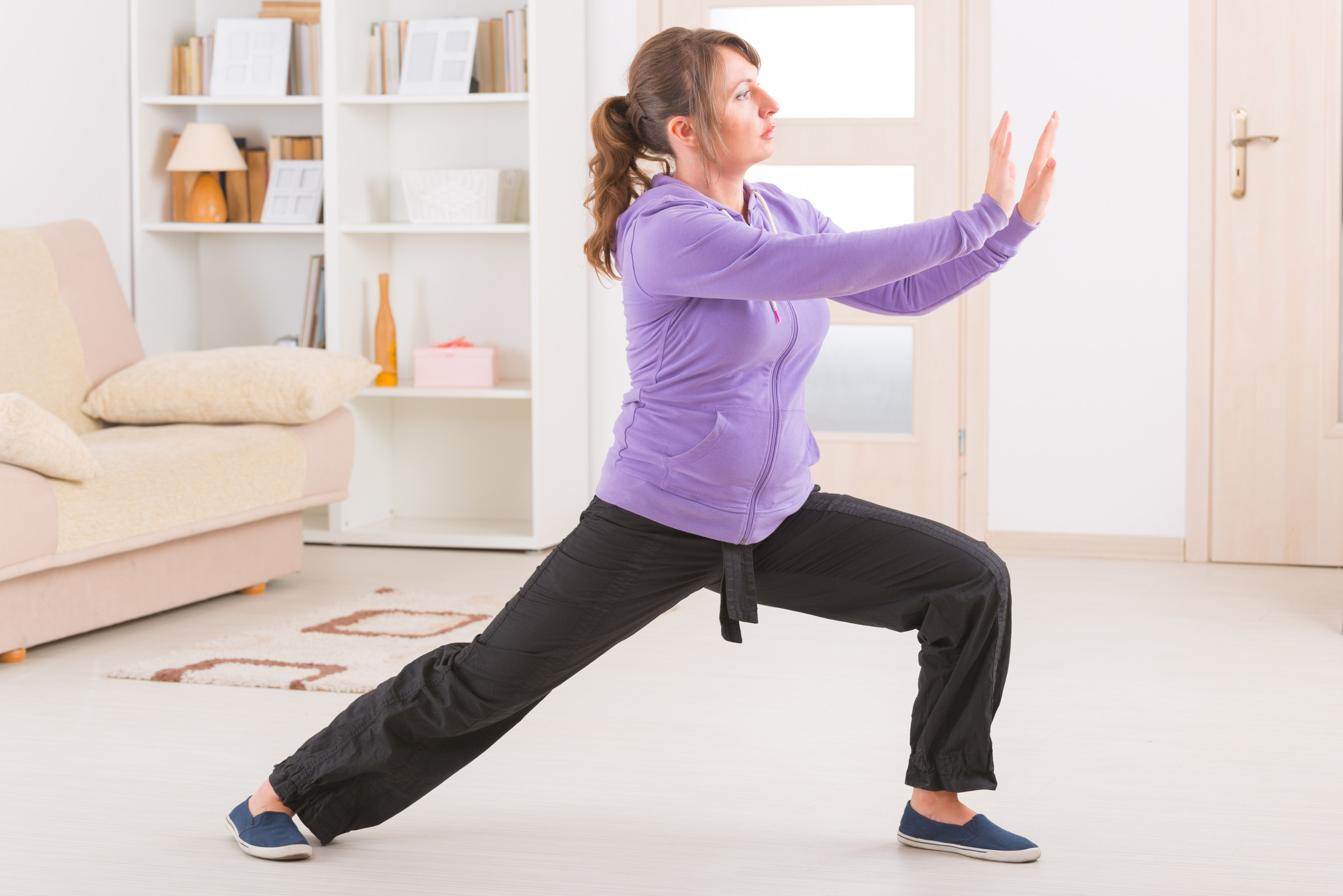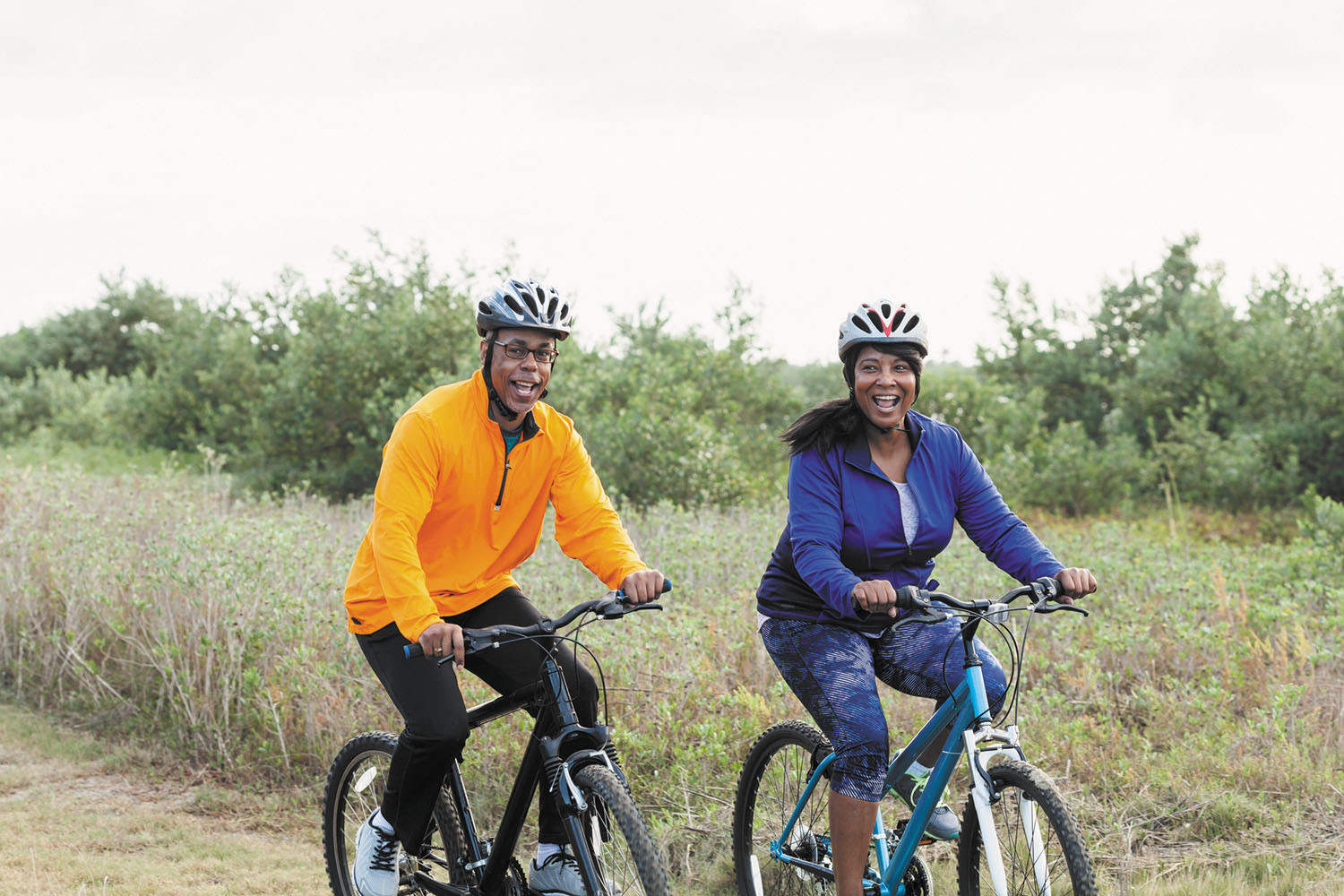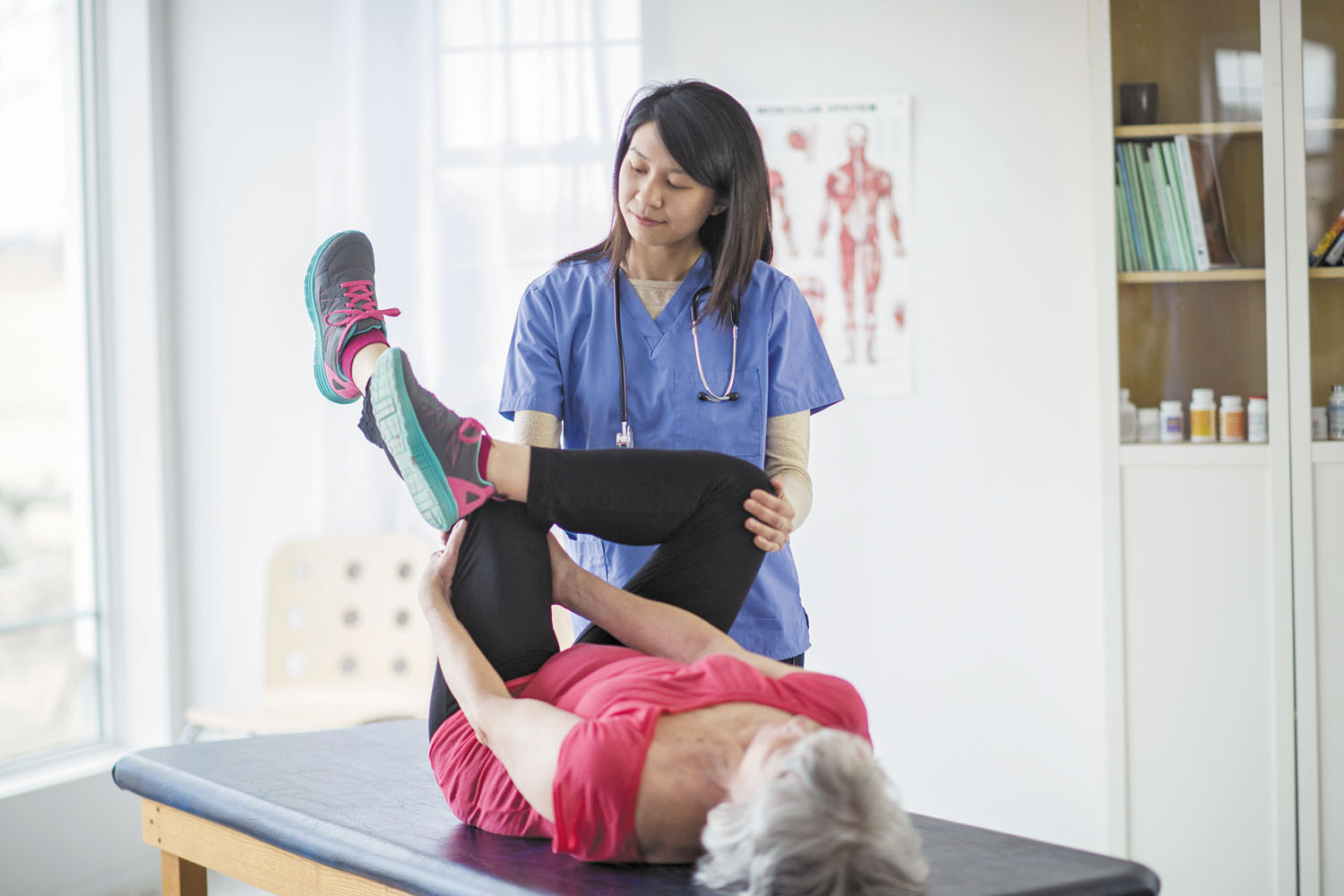
Counting steps is good — is combining steps and heart rate better?

Appendix pain: Could it be appendicitis?

Can saw palmetto treat an enlarged prostate?

How does Ozempic work? Understanding GLP-1s for diabetes, weight loss, and beyond

Zinc: What it does for the body, and the best food sources

Respiratory health harms often follow flooding: Taking these steps can help

Tips to leverage neuroplasticity to maintain cognitive fitness as you age

Can white noise really help you sleep better?

Celiac disease: Exploring four myths

What is prostatitis and how is it treated?
Exercise & Fitness Archive
Articles
Standing vs. sitting: Fewer pounds, less heart disease?
Research we're watching
Compared to sitting, standing burns slightly more calories — about 0.15 calories per minute. But that tiny difference adds up: a person who weighs 143 pounds could burn an extra 54 calories per day by standing instead of sitting for six hours, as researchers report in the Jan. 1, 2018, European Journal of Preventive Cardiology.
Assuming that person kept eating the same number of calories per day, that translates to 5.5 pounds of weight loss after one year. The estimate comes from data pooled from 46 different studies.
Weight loss and exercise may ease atrial fibrillation
Research we're watching
For people with atrial fibrillation, losing a little weight and getting exercise may improve their symptoms, according to a review published online Feb. 7, 2018, by The American Journal of Cardiology.
Atrial fibrillation (or afib) is a common heart rhythm disorder marked by a quivering or fluttering heartbeat, which can cause dizziness and breathlessness. Other symptoms include fatigue, weakness, and fainting.
Aerobic exercise or tai chi for fibromyalgia — which is better?
Physical activity is beneficial for people with fibromyalgia, but the pain caused by the condition makes exercise difficult for many. A new study compares the benefits of aerobic exercise and tai chi as treatments for fibromyalgia.
Don’t allow arthritis to keep you from exercising
News briefs
Image: © adamkaz/Getty Images
Exercise is considered the most effective pill-free treatment to cope with the pain and stiffness of arthritis. And more people are getting advice from their health care providers about how to stay active, according to a study published online Jan. 5, 2018, by the CDC's Morbidity and Mortality Weekly Report. Researchers looked at national health surveys gathered from 2002 to 2014. In that period, there was an increase in the proportion of people with arthritis (osteoarthritis, rheumatoid arthritis, gout, lupus, or fibromyalgia) who said their clinician suggested physical activity to help reduce symptoms — from 52% in 2002 to about 60% in 2014. But by 2014, about 40% of arthritis sufferers still said they weren't getting exercise counseling. That's significant, considering that 91 million people ages 18 or older are affected by arthritis, according to a study published online Nov. 27, 2017, by Arthritis & Rheumatology. You don't have to wait for a doctor to suggest exercise as an arthritis treatment. Try something gentle, like walking, tai chi, or modified yoga. For more ideas, check out the Harvard Special Health Report The Joint Pain Relief Workout (www.health.harvard.edu/jprw).
Pedal your way to better heart health
Riding a bike — either outdoors or inside — can be a good way to exercise at different levels of intensity.
Image: © Susan Chiang/Getty Images
Spring's milder temperatures often encourage people to exercise outside. Riding a bike can offer a nice break from walking, the exercise that doctors recommend most often. If you're bored of your walking route and looking for bit of a challenge, consider cycling. Biking enables you to travel faster and farther than jogging or running but puts far less stress on your joints.
"I have many patients who bike, and they find it's a great way to get some exercise, especially when the weather's favorable," says Dr. Brendan Everett, a cardiologist at Harvard-affiliated Brigham and Women's Hospital. Cycling may not burn as many calories as jogging over a given period of time, but jogging is difficult for many people, he notes. Also, you can choose a route that suits your fitness level — from a short, flat loop to a longer ride with gently rolling hills.
An exercise prescription for couch potatoes
Research we're watching
Image: © adamkaz/Getty Images
Decades of sedentary behavior (for example, sitting during most of your waking hours) can cause your heart muscle to shrink and stiffen. But for longtime couch potatoes, a mash-up of different types of aerobic exercise may help restore heart health, a new study suggests.
For the study, 53 healthy but sedentary middle-aged adults were divided into two groups. One (the exercise group) did high- and moderate-intensity aerobic training four or more days a week for two years. The other (the control group) engaged in regular yoga, balance training, and weight training three times a week for two years.
Want better exercise results in less time? Try interval training to boost your workout
Alternating between high- and low-intensity exercise may spur faster fitness gains.
Image: © SelectStock/Getty Images
Spend less time exercising and burn more calories: sounds too good to be true, right? But it may just be possible with interval training, a type of workout that uses short bursts of strenuous activity to ramp up your heart rate and boost your fitness.
Long popular with high-performance athletes, interval training — a workout that alternates between high-intensity and low-intensity activity — isn't just reserved for those seeking gold medals. "If done properly, it can be safe for the vast majority of people," says Dr. Meagan Wasfy, an instructor in medicine at Harvard Medical School and a cardiologist at Massachusetts General Hospital.
Do I get a better workout by running outdoors or on the treadmill?
Ask the doctors
Q. I often run on a treadmill rather than running outdoors, to avoid bad weather and save time. But am I getting a lower-quality workout?
A. Die-hard runners sometimes swear by outdoor runs, claiming that the treadmill can't come close to an outdoor workout featuring wind, hills, and uneven terrain, which they say makes outdoor runs more challenging. But that doesn't mean you can't get the same quality of workout on a treadmill indoors. If you run slower on the road and faster on the treadmill, or if you put the treadmill on an incline, you may be able to burn as many calories indoors as out. One study in the Journal of Sports Sciences found that putting the treadmill on a 1% incline could erase the differences in resistance between indoor and outdoor running. This put the two workouts on an equal footing — so to speak.
Smart joint strategies for keeping you moving well
Understanding risk and modifying your activities can cushion your joints from damage.
Image: © FatCamera/Getty Images
Joints are a little bit like couch cushions. Over time, the padding between your bones, called cartilage, gets worn out and flattens down — a condition known as osteoarthritis. Unfortunately, dealing with worn joints is not as simple as fixing or replacing a couch. And whether your joints wear out may not be entirely in your control.
"Unfortunately, a lot of your risk depends on your genes," says Dr. Scott Martin, an orthopedic surgeon and associate professor of orthopedic surgery at Harvard Medical School. "If you have a history of arthritis in your family, you may get arthritis in your lifetime. That's one factor you can't control." Dr. Martin is the faculty editor for the Harvard Special Health Report Knees and Hips (www.health.harvard.edu/knees).
Stand more, burn (slightly) more calories
Research we're watching
Image: © Squaredpixels/Getty Images
As many people have suspected, a new study confirms that standing more can help you burn more calories. But the number of calories it burns in the course of the day isn't even enough to work off a fun-size candy bar.
The results of a Mayo Clinic study, published online January 31 by the European Journal of Preventive Cardiology, found that adults who weighed 143 pounds, the average weight in the study, burned 0.15 more calories per minute while they stood than when they sat. So, in a six-hour day of standing instead of sitting, they would burn some 54 extra calories.

Counting steps is good — is combining steps and heart rate better?

Appendix pain: Could it be appendicitis?

Can saw palmetto treat an enlarged prostate?

How does Ozempic work? Understanding GLP-1s for diabetes, weight loss, and beyond

Zinc: What it does for the body, and the best food sources

Respiratory health harms often follow flooding: Taking these steps can help

Tips to leverage neuroplasticity to maintain cognitive fitness as you age

Can white noise really help you sleep better?

Celiac disease: Exploring four myths

What is prostatitis and how is it treated?
Free Healthbeat Signup
Get the latest in health news delivered to your inbox!
Sign Up











